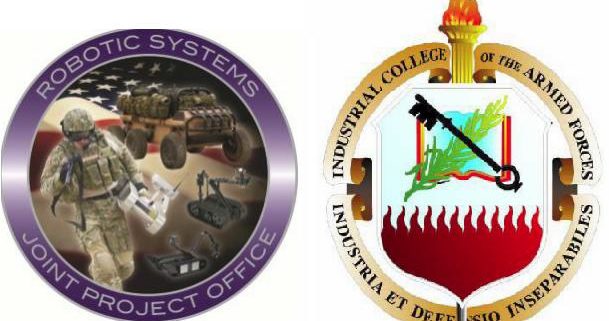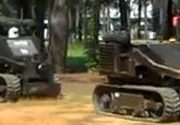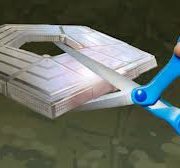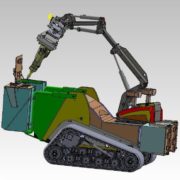RSJPO Roadmap and ICAF Robotics Report
The last two blog postings were about what will not happen in 2012. We thought we would take a break from this series and predict what you can expect. Without a doubt, you can expect more reports, visions, and roadmaps from the Department of Defense. Here are two recent DoD documents that are worth a look.
RSJPO Unmanned Ground Systems Roadmap 2012
This addendum is an interim update to the last biennial roadmap, last published in 2011.
Robotic Systems Joint Project Office (RSJPO) is an is a Joint Project Office under the direction of both US Army Program Executive Office, Ground Combat Systems (PEO GCS) and US Marine Corps Systems Command (MCSC). RSJPO’s mission is to “Lead the development, systems engineering, integration, acquisition, testing, fielding, sustainment and improvement of unmanned systems for the Joint Warfighter to ensure safe, effective and supportable capabilities are provided while meeting cost, schedule and performance. “
RSJPO’s vision is “An integrated family of robotic systems by 2020 that multiplies force effectiveness, improves Warfighter survivability, and assures battlefield dominance.”
While the 2012 ADDENDUM doesn’t have a whole lot of surprises, it does have a detailed description of Unmanned Ground Systems (UGS) that RSJPO intends to support. This is a big deal since RSJPO has to decide which capabilities (and UGS) still need to be funded as combat operations wind down.
In addition, if you are looking for a nice summary of specifications, program events, and timelines for current UGS, then you should check this out.
ICAF report on robotics industry and autonomous systems
As with the RSJPO document, this one is interesting not just for what is said, but who is saying it. The Industrial College of the Armed Forces (ICAF) is worth listening to, because it is an institution that has a huge effect on logistics and procurement.
“The mission of ICAF today is to prepare selected military officers and civilians for senior leadership positions by conducting postgraduate, executive-level courses of study and associated research dealing with the resource component of national power, with special emphasis on materiel acquisition and joint logistics, and their integration into national security strategy for peace and war.”
The purpose of this study is to “…assess the health and viability of the Robotics Industry and to determine whether it is capable of supporting the U.S. national security strategy.”
Like the RSJPO roadmap, not a lot of surprises. For example, it concludes that the robotics industry is healthy, and yes, it can support US security.
However, like the RSJPO roadmap, there is a depth of details and some well-crafted summaries. Here is some of what they say about the current state of military robotics:
“In all military robotics market segments, the purchase of smaller companies, especially those with a unique technological niche or skill, by larger firms is common. Small companies often collaborate with large defense contractors to leverage program management and defense acquisition expertise, and to bridge the gap between research and development and productization. For UGVs and small/medium UAVs, leading companies attempt to protect market share by maintaining niche capabilities and brand recognition, often marketing direct to soldiers in combat zones to lock in sales. Their focus also resists commoditization of sensors, control systems, and vehicles. In doing so, these firms attempt to reduce competition by raising barriers to entry for new companies.”
Challenges to military robotics include:
- Deficient development of compact power sources
- Insufficiently secure communications
- Lack of common standards and interoperability
- Export Controls Limiting Market Development for U.S. Military Robots
- Decrease in post war funding (especially injurious to the “immature” maritime sector)
In the short term, they expect the US to maintain its dominance in unmanned systems, despite competition from Korea, Taiwan, and other Asian countries.
The report recommends for the US to :
- Develop a Cohesive National Strategic Plan for Robotics
- Create a Strategic Robotics Research and Development Plan
- Bolster Holistic Engagement with Industry
- Define Realistic Regulatory Requirements
This is a meaty report with extended sections on Asian robotics, consequences of rapid acquisition, medical robotics, unmanned systems impact on American manufacturing, and other interesting topics.









